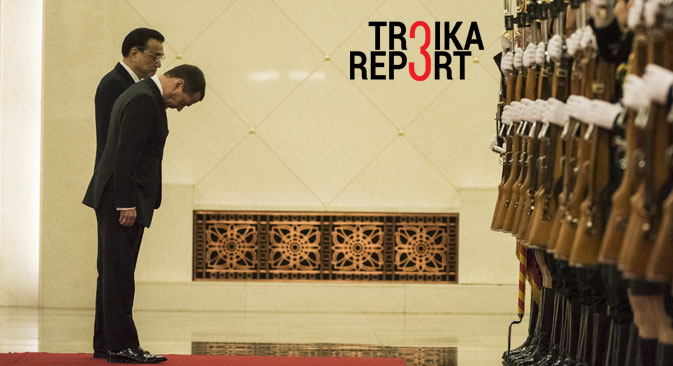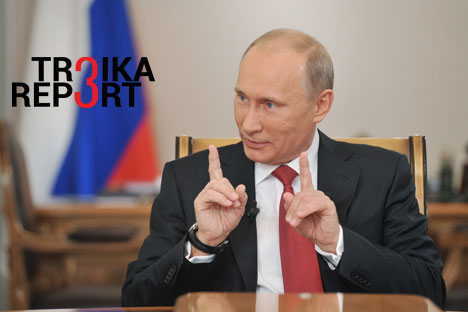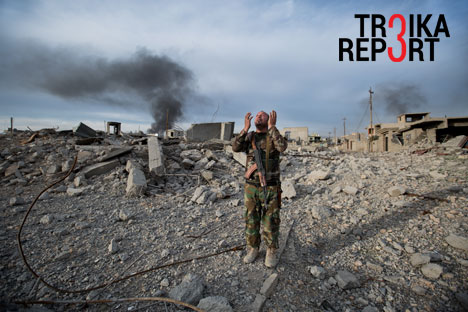Russia streamlines its ‘pivot to Asia’

Chinese Premier Li Keqiang and Russian Prime Minister Dmitry Medvedev review the paramilitary guards at the Great Hall of the People after a meeting with Chinese President Xi Jinping in Beijing December 17, 2015.
ReutersThe year 2015 seems to have turned into a test both of Moscow’s resolution and ability to “go eastward,” after being cold-shouldered by European neighbors and cold-showered by the U.S.
Throughout the year, reports on agreements, deals, contracts, official solemn pledges, and upbeat forecasts related to Russia’s proclaimed “pivot to Asia” are not backed up by the modest figures in the account books, leaving plenty of room for ominous premonitions that things are not moving in this direction either fast enough or at all.
Distressful as it is, the sharp plunge in trade turnover with China has derailed former ambitious plans to elevate it to $100 billion by the end of 2015 and then double it by 2020. Talks on the ”western route” of Russian pipeline gas delivery to China have stalled due to a slump in consumption, while the coordination of financial policies on regional markets has stumbled over the continued depreciation of the ruble.
On the other hand, the political dialogue between Moscow and Beijing is lively and even vigorous. But the same cannot be said about the relationship with Japan, with the much-anticipated visit by Russian President Vladimir Putin to Tokyo this year once again postponed.
In essence, the results of 2015 in the context of the still “long march” to the East are not only controversial but also confusing. The intellectual discourse among Moscow pundits is pitting skeptics, like Georgy Kunadze, Deputy Foreign Minister under President Yeltsin, and staunch optimists, like Gleb Ivashentsov, a former ambassador and now member of the Russian International Affairs Council, against each other.
Kremlin critic Kunadze is certain that except for its natural gas, crude oil and timber, Russia has nothing to offer either Asia or the Pacific in terms of development, and with the emergence of the U.S.-led Transpacific partnership Russia will inevitably be reduced to being an odd man out in the region.
On the contrary, Ivashentsov is focusing on the complementation of Russia’s mineral resources and the financial might of China, which could put on stream the upgraded Trans-Siberian and Baikal-Amur railroads, and also the Northern Sea route, which would serve as strategic infrastructure for linking the world’s number one manufacturer of commodity goods with customers in Europe.
Moreover, Moscow can list as a success Beijing’s consent to link its grand projects of the resurging Silk Road to the Eurasian Economic Union (which has a combined GDP of some $4 trillion) uniting Armenia, Belarus, Kazakhstan, Kyrgyzstan, and Russia. The economic foundation and the benefits of the Silk Road for Russia is highly praised, in particular, in the comments made to Troika Report by Alexander Lomanov, head research fellow of the Institute of Far-Eastern Economic Studies at the Russian Academy of Sciences.
“Actually, it is not a ‘pivot to Asia’ or a ‘pivot to the East’ in general. Today, Russia is interested in finding new partners strong in banking, financing, investment, and high technologies in order to offset the problems created by the Western sanctions. Basically, it is not a ‘pivot to Asia’ but a ‘pivot to China.’
“China is becoming an indispensible partner for Russia in terms of obtaining sophisticated technologies. For instance, certain types of engines or semiconductors are banned for export to Russia, but they can be purchased in China. Chinese producers can be at least rated as ‘second best’ because they offer decent quality and reasonable price. For this reason China is much more important to Russia today than it was several years ago.”
In the analysis of Russia’s “pivot to Asia,” Lomanov notes that it is essential not to overlook the political limitations of such countries as Japan and South Korea, which is confined to behaving within the framework of its security treaties with the United States. In contrast, China is a fully self-governing nation pursuing an independent foreign policy. This is one of the core reasons why Beijing values interaction with a similarly independent Russia, which has managed to preserve its sovereignty.
This year the Kremlin appears to have adjusted the concept of the “pivot to Asia” to more pressing daily needs. Moscow is now tending toward sidelining countries and whole international groupings where politics take precedence over business. The most apparent example is the tacit shift of emphasis from the APEC (Asia-Pacific Economic Cooperation), which concerns itself mostly with politics, to East Asia Summits, set up by the ASEAN (Association of Southeast Asian Nations) as a vehicle of economic cooperation and focused on trade tariffs, defining trade rules and facilitating the free flow of goods and capital.
There are signs that Moscow has moved up a level in its pragmatic approach to the choice of partners. Russia is now following the trail of solid proof investment opportunities, where money talks, not politicians. As one of this year’s feathers in its cap, Moscow can present the formal affilitation of Vietnam to the Moscow-led Eurasian Economic Union, laying down the legal basis for a free trade zone covering a market of 276 million customers (176 million in the EEU and 90 million in Vietnam).
On the other side of Asia, Moscow has been successful in consolidating its credentials as trade and economic partner to Tehran. Iran, a nation of 80 million, is ranked as one of the 20 largest economies in the world (inferior to that of Turkey but surpassing Australia) with a stable growth forecast. In this case politics have facilitated business: The current strategic and military cooperation in fighting ISIS and pushing toward a political settlement in Syria has upgraded the quality of trustful interaction between Moscow and Tehran.
In sum, in 2015 Russia has been pursuing a more balanced, selective and exclusive policy in the region, which formally stretches from the Mediterranean to the Pacific coast of Japan and the 11,000-plus islands of Indonesia. Moscow has streamlined its “pivot to Asia” and started to engage the nation-champions of tomorrow, choosing platforms of growth potential with more precision.
The opinion of the writer may not necessarily reflect the position of RBTH or its staff.
Subscribe and get RBTH best stories every Wednesday
All rights reserved by Rossiyskaya Gazeta.
Subscribe
to our newsletter!
Get the week's best stories straight to your inbox

